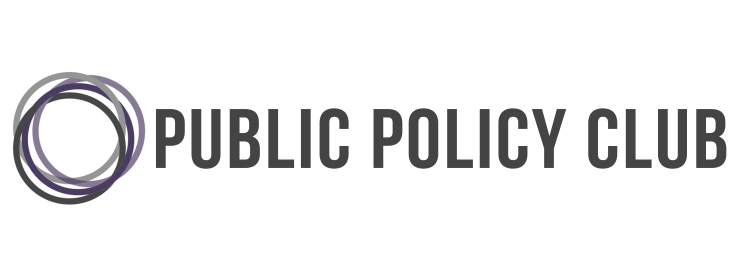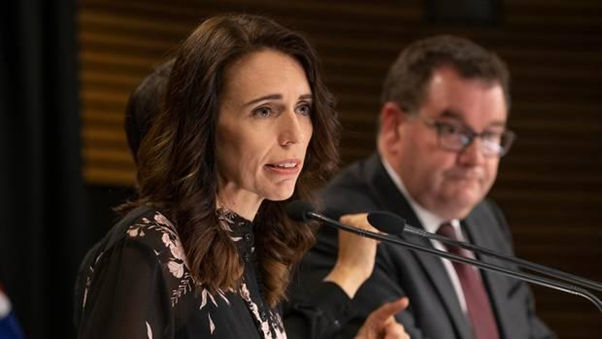By Paul Simperingham
COVID-19 has and will continue to have a drastic impact on the New Zealand economy. Global travel has ground to a halt, trade has been reduced, people have lost jobs, and the stock market is extremely volatile. OECD secretary-general Angel Gurria has warned that the economic fallout of this virus will last far longer than the pandemic itself [1].
 New Zealand’s current level 4 alert level and lockdown will likely end on the 23rd of April. After that, it’s unknown what will happen. It will likely be a descent down alert levels, and it could be a long time before restrictions are completely lifted. The economy should open up as we descend, but it likely will not be a fast return to normal life. We will have to get used to new ways of working and any business that has a high level of close human contact or relies on travel from overseas will likely have a longer recovery period. In our world of global trade, the impact on the economy and life will also be prolonged by other countries possibly recovering slower than our own.
New Zealand’s current level 4 alert level and lockdown will likely end on the 23rd of April. After that, it’s unknown what will happen. It will likely be a descent down alert levels, and it could be a long time before restrictions are completely lifted. The economy should open up as we descend, but it likely will not be a fast return to normal life. We will have to get used to new ways of working and any business that has a high level of close human contact or relies on travel from overseas will likely have a longer recovery period. In our world of global trade, the impact on the economy and life will also be prolonged by other countries possibly recovering slower than our own.
Some are comparing our current situation to the 2008 financial crisis. IMF managing director Kristalina Georgieva said the outlook is “a recession at least as bad as during the global financial crisis or worse” [2]. BNZ chief economist Stephen Toplis wrote that at the earliest, it would be “sometime in 2023 that [economic] activity will return to pre-crisis levels. And we would be surprised if the unemployment rate fell back below 5.0% before 2025.” [3]
How is the government responding?
The Reserve Bank has done what it’s designed to do — it cut the OCR from an already low 1% down to 0.25%, meaning that interest rates for banks and everyone are lower [4]. Such monetary policy is usually the first line of defence against economic slowdowns. However, as University of Auckland economist Asha Sundaram told me: “I am not sure how much cutting the OCR will really help, interest rates globally are already very low. Except for stabilization, I think monetary policy has a smaller role to play. Fiscal policy will have to be very aggressive and at a large scale, which is where the wage subsidy, and bailouts will help.”
The wage subsidies and bailouts Dr Sundaram is referring to are part of a range of measures the government has taken to try to help people and businesses through this challenging time. Beginning with a $12.1b package on March 17th, and followed with a range of other packages, government economic assistance now includes [4]:
- $500 million boost for health
- $8-12 billion in wage subsidies for affected businesses, initially with a cap of $150,000, which on the 23rd was removed.
- $126 million in COVID-19 leave and self-isolation support
- $100 million to redeploy affected workers
- $2.8 billion in business tax changes
- $2.8 billion income support package including a permanent increase of $25 to benefits and a doubling of the Winter Energy Payment for 2020.
- $2.8 billion in business tax changes to free up cash flow.
- $600 million initial aviation support package, possible to expand to $900 million at a higher interest rate.
- $6.25 billion business finance guarantee scheme. Guaranteeing 80% of business loans to businesses with revenue between $250,000 and $80 million
- Six-month mortgage payment holiday for those affected by the crisis.
- New restrictions on landlords: Freeze on rent increases, and tenancies can’t be terminated during the lockdown period unless agreed upon by both parties.
- $130 million support package to students. Including an additional $1000 to student loans, and continuing financial support to students who had their programmes discontinued.
To put just that initial 12.1b in perspective, it represents 4% of NZ’s 2019 GDP – a number similar to the entire Otago region’s share of GDP (4.4% in 2018) [5]. However, that 12.1b was just the beginning of the government’s response even just to this point, so don’t be surprised if, in the coming weeks and months, even more packages of that kind are introduced. Finance Minister Grant Robertson has said that it has provisions of $52 billion for “cushioning New Zealanders against the impact of the virus” [4].
As such, some are concerned about the rising levels of public debt. However, New Zealand has mostly been operating with a budget surplus in recent years [5], and it currently has a relatively low debt to GDP ratio of 28% [4]. This means the government should be safe to borrow capital as it needs it.

What’s next?
Experts think we are likely already experiencing the traditional definition of a recession: two-quarters of negative GDP growth. BNZ chief economist Stephen Toplis projects we will have between a 10% and 33% GDP drop in the second quarter [3], from here the question becomes how low will it go and how long will it last? From here the question becomes how low will it go and how long will it last?
Dr Sundaram said of the government’s response to the crisis “I think the NZ government is doing the right things… But I see some concerns and opportunities. I am concerned about inequality as we come out of the crisis – the worst hit will be small and medium enterprises and vulnerable individuals.”
“Cash transfers are particularly important for people at the lower end of the income distribution,” suggesting that now might be the time for “a UBI-type policy.” Dr Sundaram continued: “Our short to medium-term efforts have to be focused on beating the virus, saving lives, and ensuring the health and well-being of the population.” However, she does think that there could be some opportunities in the long term “can this be a chance to restructure the economy? Already, the slowing down of economic activity is proving to be good for the planet. Can we encourage the use of renewable energy and more sustainable economic practices?”
Airlines are both some of the world’s biggest polluters, as well as the biggest losers in this situation. Air NZ CEO Greg Foran has just said that 30% of the company’s workforce won’t be needed, and on April 9th, announced 1500 workers would be made redundant [6]. However, Dr Sundaram asks, “As airlines are bailed out, can we incentivize them to be more climate-friendly?” It’s hard to see what kind of airline will come out of this crisis. It will undoubtedly be leaner, but it might also be greener.
|
Connected to Air NZ’s suffering is that of the wider tourism sector. As New Zealand’s most significant export sector it contributes NZ$15.9bn to the country’s economy and directly employs 8% of the workforce, while indirectly employing many more [7]. It is likely that we will be seeing if we haven’t already, similar redundancies to Air NZ’s taking place across the tourism industry. Or any sector that relies on a portion of their income coming from international visitors (hospitality, accommodation). While tourism isn’t just foreign, it could be a long time before we see any international visitors, let alone the 3.9 million we saw in 2019 [8].
Trade too could be impacted, likely not to the same level as tourism but still hugely important. We could see ourselves hurt drastically if one of our major trade partners (Australia, China, US, UK) had an unchecked outbreak, or if COVID-19 became a part of everyday life. Not only would this be a concern of human suffering, but in the global world, this will have a direct effect on how we live. In 2018 trade was 28% of NZ GDP, and as a small trading nation, it is an integral part of our economy. “Given how the global economy is currently structured, the spillover effects will be substantial. NZ businesses rely on demand overseas. Similarly, they rely on parts and components coming in from abroad.”
We already saw before lockdown the government spend $100million to redeploy forestry workers, a sector hit severely by a lack of foreign demand [9]. It is possible we will see similar projects undertaken to help a considerable range of workers around the country who are affected. Since then projections have come out showing US unemployment could get as high as 30%, it’s hard to imagine that demand for New Zealand’s goods could remain as high in such a situation [10]. Dr Sundaram does point out that perhaps we can find new ways to overcome these problems, “A more diversified economy can be more resilient. Can we develop core competency in exports of business services, for instance, since a lot of these services will probably be delivered online? Can we tap into the move to remote work and communication?”
Another legacy of this crisis could be an effect on the mentality, politics, and practicality of our global world. Populist movements against globalization and the US-China trade war appear to have cooled a bit recently. Still, Dr Sundaram thinks this might be temporary “we will face backlash to globalization again in the near future, the murmurs are already there.” This crisis has alerted us to some inherent risks in globalization “we should think about managing these risks. Perhaps diversify manufacturing across countries rather than relying on one country like China. While diversifying the economy across both sectors and trading partners.”
Dr Sundaram continued: “However, as a trade economist, reversing globalization would be a mistake, and small open economies like NZ would suffer the most. Many New Zealanders work in export-oriented industries that will be affected by an increase in protectionism worldwide. Many are immigrants, with global links that may be jeopardized by restrictions on travel. Globalization has helped millions come out of poverty, which has contributed to global demand-driven growth and prosperity that NZ has tapped into.”
Don’t be surprised if our economy is harshly affected by COVID-19 and the precautions taken to protect our health. We’re going to see public debt expand rapidly, but that’s something that has happened before, and our books are in good shape to be able to handle it. The hope is that through sound policy, fast reactions, and careful precautions by everyday people we can make it through the worst of this, and that economic recovery can begin as soon as possible
The immediate threat to our health and our lives is there. Only time will tell us what will happen to the economy. Some of it will be fine, some will have to adjust, some of it may disappear entirely, only time will tell. It could be a long time before life is back to normal, and could be even longer before we know the real effect on our lives.
Sources:
[1] https://www.bbc.co.uk/news/business-52000219
[2] https://www.nzherald.co.nz/business/news/article.cfm?c_id=3&objectid=12319285
[4] https://treasury.govt.nz/publications/mei/monthly-economic-indicators-march-2020
[5] https://www.stats.govt.nz/information-releases/regional-gross-domestic-product-year-ended-march-2018
[6] https://www.nzherald.co.nz/business/news/article.cfm?c_id=3&objectid=12257107
[8] https://www.nzherald.co.nz/business/news/article.cfm?c_id=3&objectid=12323961
[9] https://www.beehive.govt.nz/release/100-million-redeploy-workers
[10] https://www.nzherald.co.nz/business/news/article.cfm?c_id=3&objectid=12321221
Featured Image Credit: https://www.nzherald.co.nz/premium/news/article.cfm?c_id=1504669&objectid=12313416
The Public Policy Club is a non-partisan club at the University of Auckland that aims to encourage, educate and involve students from all backgrounds in the education and development of political knowledge. The views and opinions expressed in this article are those of the author and do not necessarily reflect those of PPC.





